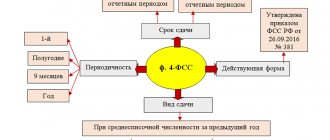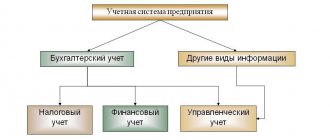What is income tax
This direct tax is levied on legal entities, and it is calculated from the amount of final profit generated at the end of the reporting period - from the profitability of the institution obtained after deducting the expenditure part. Collection operations are regulated by Chapter 25 of the Tax Code of the Russian Federation.
Legal entities are required to deduct a certain percentage of their income and send this amount to the budget system of the Russian Federation. Calculating income taxes in 2021 is an example of a critical operation that an accountant must perform correctly. If the fee is calculated with errors, the organization faces penalties from the Federal Tax Service. Our material provides up-to-date information: income tax - calculation, example for dummies, formula and calculation procedure.
So, the payers of the fee are legal entities that receive profit and are subject to the general taxation regime. Foreign enterprises (including those working through Russian representatives) conducting business on the territory of the Russian Federation and receiving income from financial and economic activities in the Russian Federation are required to pay tax. We will demonstrate with an example how to calculate the income tax of an organization that pays the fee.
By law, these categories of taxpayers are exempt from paying tax:
- institutions under special tax regimes (simplified, UTII, Unified Agricultural Tax);
- individual entrepreneurs;
- gambling companies;
- organizations taking part in preparations for large-scale events of national importance (for example, enterprises involved in preparations for the World Cup in Russia).
Regularity of dividend payments
Keep records and submit all reports to the Federal Tax Service, Pension Fund of the Russian Federation, Social Insurance Fund and Rosstat through Kontur.Accounting. Get free access for 14 days
In Art. 29 of the Federal Law of 02/08/98 No. 14-FZ and in Art. 42 of Federal Law No. 208-FZ of December 26, 1995 provides that the company has the right to pay dividends quarterly, once every six months or annually.
If company members, owners or shareholders want to distribute dividends more often than once a year, then they need to re-read the charter and find the section that states in what order and how often dividends can be paid. Often the texts of the charter are formed based on general principles and existing provisions: when creating a company, few think about how often they would like to distribute dividends. Therefore, if the charter states that dividends are distributed annually, then before making a decision to change the frequency, you need to make changes to the charter.
The period for payment of dividends is no more than 60 days from the date of the decision on payment. After its expiration, a shareholder who has not received dividends may regard this fact as a violation of his rights. He may go to court or influence the company in other ways, so you need to monitor the timing of payment.
Often, enterprises, when drawing up the minutes of the general meeting, where decisions are made on the distribution of net profit and payment, immediately fix the payment schedule so that it is clear how the amounts will be paid.
In the case of a small business, the number of owners is small. Usually they are all physically present at the general meeting, where they make decisions on the distribution of net profit, payment of dividends and sign the minutes. If the text indicates a dividend payment schedule, and if part of it is paid later than 60 days, then having the signatures of the owners, it will subsequently be difficult for any of the shareholders to make claims regarding the timing of payment.
Basic rates
Calculate income tax at the rate for 2021 for taxpayers under the general tax regime - 20% of the obtained financial result of the activity. Until 2021, organizations contributed 18% to the regional budget and 2% to the federal budget. From the end of 2021, a different breakdown by budget level came into force (Order of the Federal Tax Service of the Russian Federation No. ММВ-7-3 / [email protected] dated 10/19/2016). Now taxpayers transfer 17% to the regional budget and 3% to the federal treasury. Local governments have the opportunity to reduce the tax rate transferred to the treasury of a particular region, but the regional rate should not be less than 13.5%, and the minimum overall rate should not be less than 16.5%.
Let's look at an example of how to calculate income tax for the general tax rate. Each region has established minimum values for certain types of taxpayers. For example, in Moscow, a reduction in the tax burden to 13.5% is confirmed by the Federal Tax Service for enterprises that employ people with disabilities, produce vehicles, or represent special economic zones, technopolises and industrial parks. In St. Petersburg, only those payers who work in the territory of the special economic zone pay a simplified regional contribution of 13.5%.
Some categories of taxpayers pay fees at special rates, the accrued amounts of which are sent exclusively to the federal budget. Special rates apply to the following categories of payers for certain types of income:
- foreign companies that do not have a Russian representative office, producing hydrocarbons and controlled foreign companies - 20%;
- foreign companies without a representative office in Russia pay a tax on income from the rental of vehicles and for international transport - 10%;
- Russian enterprises from dividends of foreign and Russian companies and from dividends from shares on depositary receipts - 13%;
- foreign companies receiving dividends from Russian enterprises and owners of yield on state and municipal securities - 15%;
- companies receiving income from interest on municipal securities and other income, according to paragraphs. 2 clause 4 art. 284 of the Tax Code of the Russian Federation - 9%.
Medical and educational institutions, residents of special economic zones and free economic zones in Crimea and the city of Sevastopol, organizations participating in regional investment projects and operating in the territory of rapid socio-economic development are exempt from paying the fee.
What innovations happened in 2018
The rate for the tax levy we are considering in this article has remained unchanged since last year, 2021. It is 20%. As mentioned above, only its distribution between budgets of different levels has changed.
Thus, the federal treasury, which previously claimed only 2% of the required collection, now receives 1% more, therefore, the regional budget has lost this percentage, and instead of 18% today it has only 17%.
In 2021, a widespread assessment of the qualification level of company employees began. Since it was necessary to involve as many enterprises as possible to complete the task, the costs associated with assessing the qualification level were allowed to be included in the list of expenses that can be reduced from the taxable financial base.
To carry out the required assessment, each employee must provide written consent
In addition, such a check cannot be initiated “out of thin air”. So that it can subsequently be included in the list of expenses incurred by the company, it is necessary to provide employees with an employment contract and draw up an agreement for the provision of services aimed at assessing qualifications.
If an employee works in a company without employment, you can conduct a check on him, however, only for your own information, because such costs are prohibited from being included in the list of items that reduce the amount of profit.
Review: Major changes to tax legislation in 2018
Calculation formula
All step-by-step instructions on how to calculate income tax come down to using formulas. You will find the figures for them in the balance sheet and in the reporting. To calculate the amount of income, use the formulas:
TNP = D – PNO + SHE – IT;
TNU = R – PNO + SHE – IT,
Where:
- D - enterprise income;
- R - expenses of the enterprise;
- PNO - permanent tax obligations;
- ONA - deferred tax assets;
- ONO - deferred tax liabilities;
- TNP - current income tax;
- TNU - current tax loss.
Distribution of net profit of previous years and payment of dividends from it
Keep records and submit all reports to the Federal Tax Service, Pension Fund of the Russian Federation, Social Insurance Fund and Rosstat through Kontur.Accounting. Get free access for 14 days
There are no restrictions or problems for the company, because all net profit can be distributed in accordance with the decisions of the owners. It is advisable to note this point in the minutes of the general meeting at which the decision on the distribution and payment of dividends is made. It is better to directly indicate: “based on the results of a certain reporting period, for 2021, such and such net profit was received. As of the reporting date, December 31, 2021, the enterprise also has retained earnings from previous years in such and such an amount.”
Next, a decision is made to distribute all the net profit that is reflected in the balance sheet: that which was received during the reporting period, and that which remained at the disposal of the enterprise from previous years. Indicate the numbers directly and reflect what share of net profit is used to pay dividends.
Accountant
The first thing the chief accountant must do is to reflect the company's debt to pay dividends to its shareholders, participants or owners. The amounts must be calculated and calculated for each participant. The wiring depends on the situation:
- the participant is employed in the company - Dt 84 Kt 70;
- the participant does not work in the organization or is a legal entity - Dt 84 Kt 75.
The posting reflects the accrual of dividends based on the decision of the general meeting. Without a paper version of the minutes of the general meeting, which confirms the decision on the distribution of dividends, this posting cannot be made. Therefore, the posting must be generated on the date of signing the corresponding payment protocol.
After the entry appears in the enterprise’s balance sheet, accounts payable arises as a liability to participants in the payment of dividends. Turnover in the debit of account 84 reduces net retained earnings, which is recorded in section 3 “Balance”. The source of payment of dividends is net profit, the economic meaning and legal nature of this operation is fully consistent with reality and does not contradict the law.
Calculation examples
Let's look at an example of calculating income tax for a financial year. Let's say the company is on the general taxation system. Income for the reporting period amounted to 6,000,000 rubles. Costs for the same period are 2,000,000 rubles. Thus, net profit: 6,000,000.00 – 2,000,000.00 = 4,000,000.00. Here are instructions on how income tax is calculated in this case:
- Contributions to the regional budget will be: 4,000,000.00 × 17% = 680,000.00 rubles.
- Interest paid to the federal budget: 4,000,000.00 × 3% = 120,000 rubles.
Here are instructions on how income tax is calculated if an organization belongs to a separate category of taxpayers paying contributions to the regional treasury at a simplified tax rate of 13.5:
- Local budget: 4,000,000.00 × 13.5% = 540,000.00 rubles.
- The required 3% must be paid to the federal treasury: 4,000,000.00 × 3% = 120,000.00 rubles.
Let's look at another example of calculating corporate income tax using a formula with tables - for an LLC. According to the profit and loss statement in Form No. 2, LLC “Company” received income in the amount of 600,000.00 rubles. Cost structure according to the formula:
- 5000 rub. — permanent tax liability;
- 6500 rub. - Deferred tax assets;
- 35,000 rub. — accrued depreciation (linear method);
- RUB 50,000.00 - non-linear depreciation - for tax purposes.
The deferred tax liability is: 50,000 – 35,000 = 15,000 rubles.
Income tax for the reporting period: 600,000.00 × 20% (17% + 3%) = RUB 120,000.00.
Let's reflect the accounting records by indicators in the table:
| Wiring | Sum | Contents of operation |
| Dt 99 Kt 68 | 120 000,00 | Tax payment for the reporting year is taken into account |
| Dt 99 Kt 68 | 5000,00 | Permanent tax liability carried out |
| Dt 09 Kt 68 | 6500,00 | Deferred tax assets offset |
| Dt 68 Kt 77 | 15 000,00 | Deferred tax liability accepted |
Tax returns are submitted to the territorial Federal Tax Service before the end of the reporting period (year). The organization distributes payment amounts evenly and pays them in advance - monthly or quarterly throughout the reporting period. After the end of the year, the accountant transfers the remaining amount of income tax.
Filling out the declaration - main nuances
The income tax return is submitted by all companies using the common taxation system at the end of the reporting period (first quarter, six months, 9 months and 1 calendar year). Accordingly, the reporting dates in 2021 are April 28, July 28, October 28 and March 28, 2018. The code also provides for the provision of reporting for some organizations once a month:
Companies with up to 100 employees. All others can submit a declaration in paper format electronically. The following sheets must be present:
- Title (sheet 01);
- Subsection 1.1 (section 1);
- Sheet 02;
- Appendixes: No. 1, No. 2, related to sheet 02.
All other additional sheets are filled out if necessary. On the title page you need to fill in complete information about the reporting organization:
- checkpoint and tax identification number;
- Correction number;
- The reporting (tax) period for which the declaration is filled out;
- Code of the tax authority to which the declaration will be submitted;
- Full company name;
- Type of activity (indication of the appropriate code);
- Number of pages in the declaration;
- The number of additional sheets containing confirmation of documents or their copies and other information that will depend on the type of activity of the organization.
The amount of tax that needs to be transferred to the budget is indicated in section 1. The necessary data is on lines 270-281 in sheet 02. Advance payments are taken into account. So, if a company transferred 5,000 rubles to the general budget in the first quarter, and the profit tax for six months was 8,000 rubles, then at the end of the six months an amount of 3,000 rubles is paid. (8,000 - 5,000).
Sheet 02 displays the tax base, defined as the difference between the organization’s profit and expenses. Line 110 indicates the losses of previous years transferred to the present time. The appendix to this sheet No. 1 must display all income, including non-operating income. Appendix No. 2 indicates all expenses of any type.
Advance payments
If the organization’s profitability amounted to no more than 15 million rubles (quarter) for the previous tax period, then it has the opportunity to pay an advance on income tax quarterly. The amount is calculated from the actual amount of income.
If the company has a profitability exceeding 15 million rubles, then it must make an advance payment monthly. An example of how to calculate an organization’s income tax: a specialist will calculate the fee based on the estimated level of income predicted based on the reporting data of the previous quarter.
Results
Calculation of tax on profits at the end of the year is carried out by multiplying the tax base by the rate. The indicators that form the base are taken from tax accounting data and cover the entire tax period, equal to a year. The amount of tax in this calculation is calculated for 12 months. To obtain the amount that will be paid (or returned from the budget) based on the results of the annual calculation, it should be reduced by the amount of advance payments accrued for the year. In addition, the tax can be reduced to zero by taking into account the amounts of taxes paid (trade tax and payments made outside the Russian Federation), as well as investment deductions.
Sources: Tax Code of the Russian Federation
You can find more complete information on the topic in ConsultantPlus. Free trial access to the system for 2 days.
Expenses and income of the organization
Income is the proceeds from the main types of financial and economic activities of the institution. Income is the enterprise's revenue from third-party resources. Such sources will be funds received from leased property, loans provided, etc.
Here is an example of how to calculate income tax in 2021. When calculating the payment, net income is accepted - without deductions for value added, excise taxes, etc. Accompanying documentation must be attached to the indicated income - payment orders, invoices, accounting data from the book of income and expenses.
Expenses are costs aimed at satisfying the production, general economic and basic needs of the organization (wages, materials, equipment, etc.). Expenses can also be indirect, for example, expenses aimed at paying off interest on loans. All costs must be reasonable and documented.
Profit before tax - all terms
Profit is a financial result received by an enterprise for a certain time interval, taking into account income minus expenses incurred.
Profit calculated before tax is an indicator showing the difference between gross profit, also called marginal profit, and the amount of non-production expenses. Another name for this financial result of entrepreneurial activity is operating profit , in English documentation the abbreviation EBITDA or EBT (Earnings Before Tax).
It is considered until the following are paid from it:
- tax fees;
- accrued fines;
- fines;
- loan payments.
NOTE! If a company has long-term financial obligations in percentage terms, they are calculated depending on the profit before tax indicator.
The logical question is: what then is gross profit, on which operating profit depends?
Marginal (gross profit) , in English literature defined as “cost of goods sold”, that is, “cost of goods sold” (denoted by the abbreviation COGS) is the company’s revenue minus cost.
What expenses are deducted from income?
To find out the amount of net profit, income is subtracted from expenses. All expenses must be confirmed and economically justified. To do this, the accountant must correctly prepare and maintain primary and tax documentation. When calculating profit, the following costs are taken into account:
- production;
- general economic;
- representative;
- transport;
- advertising, but not more than 1% of sales revenue;
- expenses for training and advanced training of personnel;
- interest on loans and credits.
Formulas for calculating profit before taxes
To calculate profit before tax (operating), it is advisable to apply the following formula:
OP = B + OD – OR + ID – IR
where: OP – operating profit (required profit before tax); B – revenue, that is, income received as a result of the sale of the company’s products (goods, services); OD – ordinary income, that is, income from the production activities of the organization; OR - ordinary expenses, that is, expenses for cost; ID – other income of the organization, in addition to production; IR - other expenses.
The corresponding indicators are taken taking into account the requirements formulated in PBU 9/99 “Income of the organization” and PBU 10/99 “Expenses of the organization”.
Sometimes this same calculation is formulated slightly differently:
PDNo = PR + RD + RR + DVR – DRR
where: PDNo – profit before tax (operating); PR – profit from the sale of goods and services; RD – sales income; РР – sales costs; DVR – non-sale income; DRR – non-sales expenses.
Here the indicators are taken taking into account the definitions of the Tax Code of the Russian Federation (Chapter 25, Articles 248-273).
The PR indicator in this formula - profit from sales - differs from RD - sales income. To determine PR, you need to apply the formula:
PR = VP – KR – UR
where: PR – profit from sales (sales); VP – gross profit (net revenue from which cost has been subtracted); KR – commercial expenses; UR – management expenses.
All indicators necessary for calculating the PR are reflected in the corresponding lines of the accounting report on financial results.
What expenses are not taken into account when calculating?
When calculating income tax, the following costs are not taken into account:
- contributions to the authorized capital;
- penalties and fines;
- property and funds transferred to pay for loans and borrowings;
- advance payment for goods or services;
- the cost of property transferred free of charge and the costs of transfer;
- pension benefits;
- vouchers for treatment and rest of employees, etc.
A complete list of expenses that are not taken into account in the calculation is given in Art. 270 Tax Code of the Russian Federation.
List of objects that are not taxed
The following objects are not subject to taxation:
- prepayment for products (if the accrual method is used);
- loans;
- an amount reflecting the value of the property that was used as a capital contribution;
- remuneration for mediation;
- grants and funds from a target agreement;
- the amount spent on inseparable improvements to the leased area, implemented by the tenant himself.
Transactions not subject to taxation
In addition, the tax base does not include property acquired free of charge from an individual or legal entity whose share in the authorized capital exceeds 50%, as well as from other companies - in this case the recipient must have at least half authorized capital.
In a situation with the transfer of property received free of charge within a period of up to 12 months (from the date of acquisition), it must be taken into account that in such consideration its value will be reflected in the base for the current period.
Recognition of income and expenses
The moment of recognition of income and expenses is the period in which the receipts or expenses taken into account when calculating fees are posted. This is important for calculating income tax for dummies. The moment of recognition directly depends on the method of recognition of income and expenses. There are cash method and accrual method.
If an organization has chosen the cash method, then it must record income when it is immediately received, and expenses when funds are written off. Under the cash method, tax payments are reflected on the days of receipt. write-offs. The cash method cannot be used by banking organizations. The organization has the right to recognize profitability (costs) upon receipt (write-off) in the case where revenue is recorded in the amount of no more than 1 million rubles for each quarter (the last 4 quarters are taken into account). If revenues exceed this threshold, then the company must switch to the accrual method.
Under the accrual method, all income and expenses are recorded in accounting when they arise, and tax payments are reflected on dates confirmed by primary documents. The actual date of payment does not matter.
An institution has the right to annually choose the method of recognizing income and expenses and notify the tax office about this by December 31 of the current year.
Net assets
Keep records and submit all reports to the Federal Tax Service, Pension Fund of the Russian Federation, Social Insurance Fund and Rosstat through Kontur.Accounting. Get free access for 14 days
This is the difference between a company's assets and its debts (liabilities). The difference between assets and liabilities is recorded in the final line of section 3 of the enterprise’s balance sheet. Conditions:
- In accordance with the law on LLCs, the amount of net assets must necessarily exceed the amount of the authorized capital. If the amount of net assets is less than the amount of the authorized capital, then the company is obliged, after a period of time, to reduce it to the amount of net assets. This entails difficulties and risks for the company, because many small businesses have the minimum amount of authorized capital allowed by law: 10 thousand rubles for an LLC. If a situation arises in which the size of net assets is less than this threshold amount, then, on the one hand, the company is obliged to reduce the amount of the authorized capital, and on the other hand, the amount of the authorized capital cannot be less than 10 thousand rubles.
- If a company allows this situation to happen long enough, it will be subject to sanctions up to and including liquidation. As for the payment of dividends, in accordance with Article 29 of the law on LLCs and Article 43 of the law on JSCs, a decision on the payment of dividends cannot be made if at that moment the value of the company’s net assets is less than its authorized capital. Therefore, it is imperative to monitor the size of your net assets.
- Payment of dividends is not allowed until the authorized capital is paid in full.
The procedure for paying dividends is regulated by corporate legislation and the company's charter. The classic option is the annual payment of dividends based on the results of the financial year, when the financial statements for the previous year are prepared. In accordance with the law on LLCs, at the end of the year, the company must hold a regular annual meeting of participants and shareholders, at which the financial statements, the amount of net profit are approved, and then the owners of the company decide on the distribution of net profit.
How will net profit be distributed? This issue is within the competence of the general meeting of participants. The state does not interfere in the distribution processes; it controls the procedure from a taxation point of view, because at the moment the decision is made to pay dividends, the tax base for personal income tax arises.
Important:
- The results of the general meeting of shareholders or participants must be documented: attention is paid to this when conducting audits. Often decisions on the distribution of dividends and net profits are made orally and money is paid on this basis. Subsequently, this can lead to serious problems: if one of the owners, participants or shareholders considers that he has been deprived, then he has the right to go to court to restore his violated rights. If there is no document drawn up on paper, then it will be difficult for any of the parties to the conflict to refer to it.
- In the absence of minutes of the general meeting, accounting does not have the right to reflect business transactions or make entries for the accrual and payment of dividends. In accordance with the accounting law 402-FZ, facts of economic activity are recorded in accounting only on the basis of primary documents. In this case, the primary document is the decision of the general meeting on the payment of dividends, drawn up on paper.
Profit at a loss
Calculating profit when receiving a loss is a question that worries many entrepreneurs, because how to pay tax when no net profit was received.
We hasten to reassure you! If there was no profit, it is effectively zero. Consequently, when multiplied by the tax rate, a zero value is also formed, which means there is no need to pay tax. It is important to remember one thing here: in order to achieve exemption from tax payments in the event that the company receives financial losses, it is necessary to officially confirm the loss. To do this, you need to file a tax return, just like in the case of making a profit. For information on how to do this, read the article on zero reporting.
Let's take another look at how to calculate income taxes. Your company produces interior compositions. It is necessary to calculate the tax amount for the first three months of 2021, provided that:
- you received a bank loan for half a million rubles;
- sold compositions worth 1 million 180 thousand (including value added tax);
- spent 350 thousand on the purchase of production resources;
- paid employees a fee for work in the amount of 250 thousand;
- contributed money to insurance funds for 40 thousand;
- depreciation was made by 30 thousand;
- paid interest payments for a loan in the amount of 25 thousand;
- At the same time, they took into account the loss for the past four quarters, amounting to 120 thousand.
It turns out that for the first three months of 2021, your company’s expenses amounted to 695 thousand rubles (350,000+250,000+40,000+30,000+25,000).
Since the income received is indicated without taking into account value added tax, it will total exactly one million rubles, since 180,000 is 18% VAT, which is due to the state.
The amount of the loan cannot be taxed by law, therefore, it is not considered a tax base. It turns out that your company’s net profit for the first three months of 2021 was 1,000,000-695,000-120,000 = 185,000.
The tax will be calculated according to the formula already known to us: 185,000*20% = 37,000, of which 3% (5550) will go to the federal budget and 17% (31450) to the local budget.





